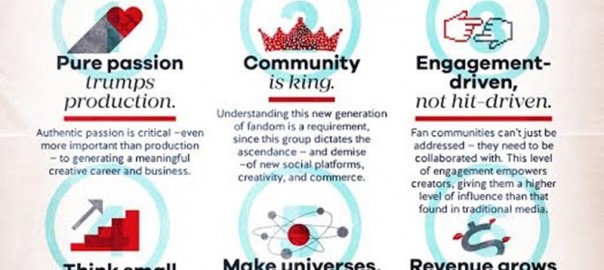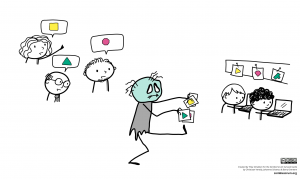(November 23, 2015), we talked about an impressive industry report, published by Ogilvy and Victorious, called The Digital Social Contract. We gushed about how this 110-page paper—authored by Jeremy Katz, Robert John Davis, Alta Sparling and Bing Chen—ascended above hackneyed tips and tricks to create a sincere, sophisticated document that explores video marketing in our current digital landscape.
In Part 1, we examined the sudden, paradigm-shifting evolution of video marketing as laid out in The Digital Social Contract. Today, in Part 2, we’ll continue to shine a light on some of the highlights from this document and focus on how this knowledge can be used to maximize resources in our new Internet-driven ecosystem.
Rousseau 2.0 (a.k.a. A Whole New Breed of Gatekeepers)
As with the social contract described by Jean Jacques Rousseau back in 1762, the Digital Social Contract cites the “community” (as opposed to a ruling class or higher power) as responsible for constructing the rules. This means that we—as business owners, marketers and content/product creators—don’t get to make the rules. No matter how much we wish we could. So, then, who does control this digital community? Or, if not “control,” per se, whose voice is loudest in this new world order?
“The online video star,” suggests The Digital Social Contract. “That celebrity and the community he or she represents controls every aspect of video entertainment, artist discovery, management, creative development, distribution, monetization, and ownership. Control is now in the hands of the creators and their audience. The gatekeepers are no longer required.”
So what does this mean, exactly? A fatal blow to advertising? Of course not. Advertising will always be here in some form, but now we must pay closer attention to the form that advertising takes. Not just in what we want to say (message) and where we say it (distribution channel) but very much in terms of how things are said. Consumers are now savvier than ever at identifying when they were being talked to; and now, more than ever before, they can just walk away from that conversation and get what they’re looking for elsewhere. So to reach them, and not alienate them into ending the “conversation,” the message delivered must be delivered in an organic and entertaining way.

To Purpose and Re-Purpose
One of the key points I gleamed from The Digital Social Contract is that repurposing content, ultimately, is a fool’s errant. It simply just doesn’t work any more to take, say, a 30-second TV spot, cut it down, and then call it an online advertisement. Appealing to the digital community requires it’s own, unique, purpose-driven solution.
What does that solution look like? It changes by the case, of course, but the authors of this document lay out six laws to abide by:
1. Pure passion trumps production. Authentic passion is critical — even more important than production — to generating a meaningful creative career and business.
2. Community is king. Understanding this new generation of fandom is a requirement, since this group dictates the ascendance — and demise — of new social platforms, creativity, and commerce.
3. Engagement-driven, not hit-driven. Fan communities can’t just be addressed — they need to be collaborated with. This level of engagement empowers creators, giving them a higher level of influence than that found in traditional media.
4. Think small to be big. Thanks to community diversity and the ongoing engagement between fans and creators, the latter can financially sustain more niche businesses than ever before.
5. Make universes, not content. Navigating and programming for all social technology platforms is cost, time, and labor intensive. Approaching disparate platforms holistically, as a unified brand, has the opposite effect, streamlining production and easing platform navigation.
6. Revenue grows when it disappears. The Mobile Generation hates being sold to, at least in an obvious way. As a result, platforms and businesses need to engineer revenue streams that amplify — rather than interrupt — the creative experience.
The good folks over at Tubefilter actually created a great infographic to highlight these laws:
4 Actions Necessary for Brand-Building in the 21st Century
To excel in this new dichotomy, we must consider new ways of thinking and revised approaches to addressing consumers. More specifically, the Digital Social Contract outlines four steps that every brand should take:
- Honor community as king
- Find pure passion in (niche) creators
- Increase revenue by letting it fade
- Foster engagement through (creator and brand) universes
Minors vs. Majors? No, This is a Different Sport Entirely
If nothing else, The Digital Social Contract makes a compelling case that marketing–video marketing, in particular–has truly and irreversibly changed. So much of what’s contained in here is about accepting things as they are and now harping on how things used to be (or perhaps “should be). As such, we wanted to end our post with three quotes that hammer home this point:
- “Creators are not influencers even though they are influential.”
- “Online video is not the minor leagues for TV any more than TV is (or ever was) the grapefruit league for radio.”
- “Incredible opportunity waits for those brands that figure all of this out.”
(925)
Report Post









